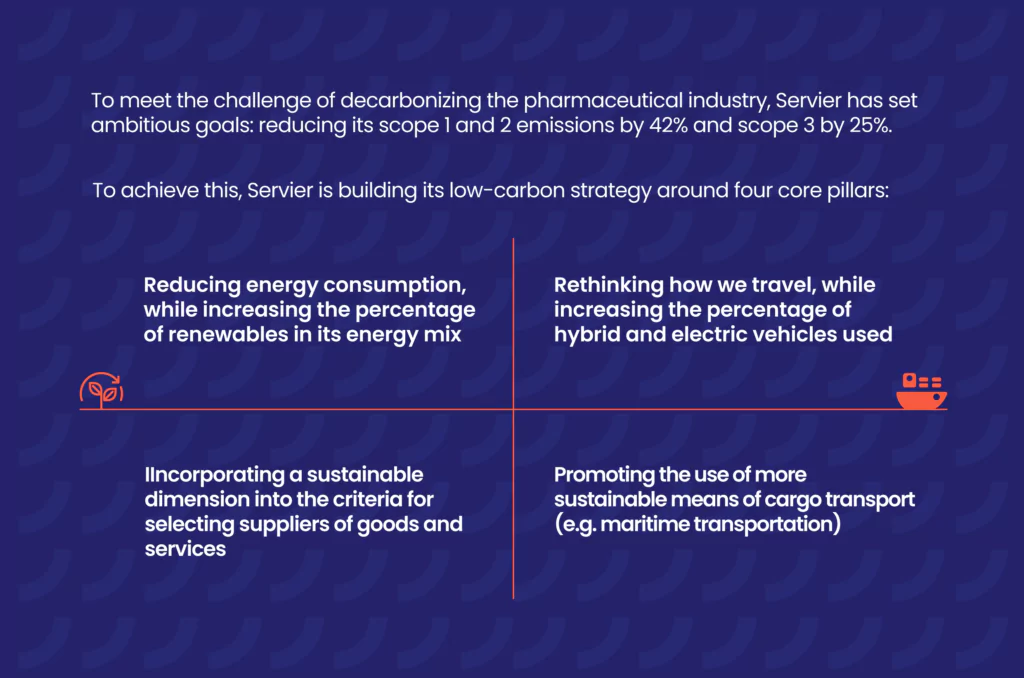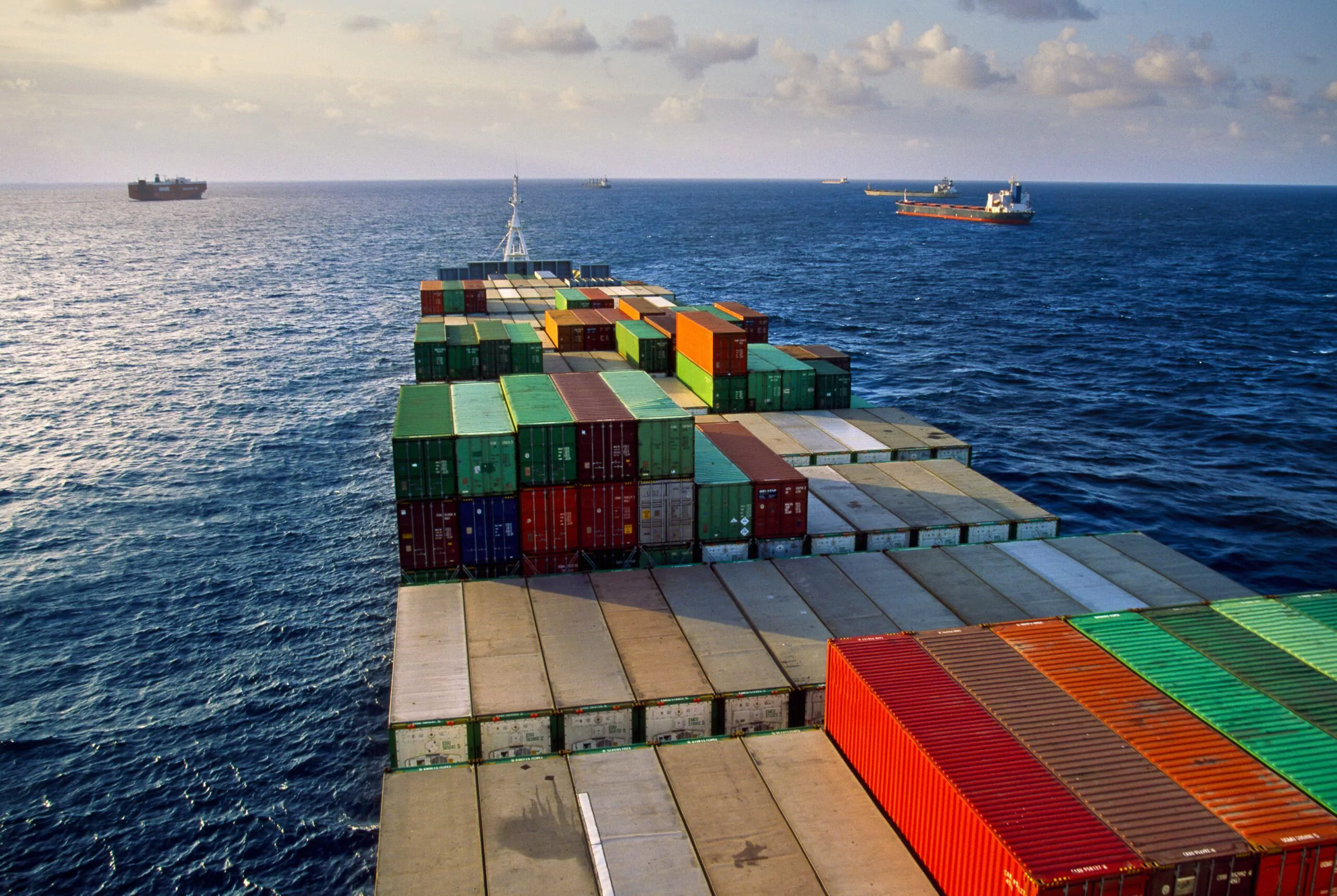Reducing emissions: A major challenge
The pharmaceutical industry faces a challenge on two levels. On the one hand, it must maintain a high standard of care for patients, as the global population is aging – especially in developed countries – and therefore has greater health needs. On the other hand, it must limit its environmental impacts.
The pharmaceutical industry accounts for 4.4% of CO2 emissions globally1, and significantly more in developed countries (7.6% in the United States, 6.4% in Japan, 5.4% in the UK and 5.2% in Germany2). Of these, 75%3 are indirect, meaning that they are linked to the value chain: production, transport, medical devices, equipment and technologies, instruments, etc.
If no action is taken and this becomes the status quo, things could deteriorate rapidly — the pharmaceutical industry could see its carbon footprint triple by 2050.1
To reduce its emissions all while remaining efficient, the pharmaceutical sector has several options, including optimizing its value chain and capitalizing on breakthrough innovations.
Options for reducing the sector’s emissions
First step: Optimizing the production chain
Most emissions are linked to the value chain, so this is where the first opportunities for decarbonization lie. One avenue to explore would be to relocate manufacturing facilities so that they produce medicines as close as possible to the place of consumption. This would make it possible both to decarbonize and to meet patients’ needs more quickly.
Mathis Egnell is an engineer in charge of the health program at The Shift Project, a think-tank working to mitigate climate change and reduce the economy’s dependence on fossil fuels and oil in particular. He believes that indicating the carbon content of each medicine would be a good idea.
“In the UK, the National Health Service (NHS) has drawn up a roadmap to bring its suppliers on board and work toward this. From 2028, it plans to require drug manufacturers to publish their carbon content in order to be able to access the British market. France is also taking similar steps. However, it would be even more relevant to take action at the European Union level, for greater impact.”
Another way of decarbonizing the value chain is to opt for more environmentally responsible means of transport, energies, and buildings. For instance, four of the Servier Group’s 15 industrial sites now use 100% renewable electricity, generated by on-site solar panels or sourced externally.
Mathis Egnell

Mathis Egnell is a project engineer at The Shift Project think-tank, specializing in energy and climate issues in the healthcare sector. He is currently in charge of the healthcare industry decarbonization project and has been working for over 3 years on actions to be taken in the healthcare and autonomy sector to reduce greenhouse gas emissions.
Servier now prioritizes the use of maritime freight to ship its medicines. In 2022-23, 57% of its intercontinental shipments were transported by boat, which represents a 12% increase in maritime transport and a 4% decrease in air transport compared with the previous year.
Second step: Capitalizing on breakthrough innovations like artificial intelligence AI and eco-design to decarbonize health
To decarbonize the health industry, and production of medicines in particular, breakthrough technologies that promise to deliver major gains in terms of efficiency also have a role to play.
As an example, generative AI can be used to accelerate the time it takes to develop medicines. This technology can be used to identify the most promising molecules and simulate their interactions on various scales, with approaches based on phenotypes (all of an organism’s observable traits) and genomes (all of an organism’s genetic material). This makes it possible to increase the number of potential drug candidates and reduce the risks of failure.
For example, a study by Nvidia and Recursion Pharmaceuticals made it possible to test — in one week — a quantity of molecules that it would have taken 100,000 years4 to test using traditional methods. Elsewhere, Insilico Medicine used generative AI to develop a medicine to treat a lung disease. It claims that use of this technology enabled it to develop itstherapeutic solution in two and a half years instead of six, while dividing the cost by 10.
What’s more, AI can be used to improve diagnostics and therefore limit waste, because a correctly diagnosed patient is treated more quickly, for example, for endoscopy and reading x-rays. To demonstrate this, a Swedish study proved that using AI to support reading mammograms helped radiologists to detect 20% more breast cancers.5
of new drugs to be eco-designed by 2030.
The eco-design of medicines is another area worth looking into. This includes the use of green chemistry for drug synthesis or, at the end of the value chain, the choice of eco-friendly materials for packaging. This is the principle behind Servier’s EcoDesign program, launched in 2020. It has set sights on 100% of its new medicines to incorporate eco-design principles into their packaging by 2025, and 100% of new drugs to be eco-designed by 2030.
By combining the optimization of existing processes with breakthrough innovations, equally good or even better care can be provided, with a significantly lower impact on the environment. But to achieve it, all industry stakeholders must work together with a view to achieving this. Fortunately, awareness of this challenge is gaining ground, and a number of countries are taking action to provide greener health care for their populations. The US Department of Health intends to reduce its emissions by 50% by 2030 and achieve neutrality by 2050. In the UK, the NHS is aiming to be carbon neutral by 2040, while the issue of decarbonization is also being examined at in countries like India, China and Japan. By continuing to raise efficiency levels and innovate, the pharmaceutical industry is positioned to be a valuable ally to reach these goals.
“The sustainable transformation of the pharmaceutical industry represents an unprecedented challenge that calls for unique responses. R&D programs and manufacturing processes are subject to strict regulations. These priorities in terms of safety limit our flexibility and any changes to our practices take time.
We are constantly looking to achieve the perfect balance between ecological goals, patient interests and health requirements. To do this, we need to ensure that strategies are aligned and establish collaboration that takes into account the interests and outlook of all stakeholders (patients, suppliers and partners).”
-
 Shuo Wang CSR Manager, Servier
Shuo Wang CSR Manager, Servier

[1] UPSTREAM SCOPE 3 EMISSIONS ACROSS THE PHARMA INDUSTRY, mai 2023
[2] THE PHARMACEUTICAL INDUSTRY’S CARBON FOOTPRINT AND CURRENT MITIGATION STRATEGIES: A LITERATURE REVIEW, IPSOR annual 2023
[3] Accelerating the transition to net zero in life sciences, McKinsey, août 2023
[4] Forbes : https://www.forbes.com/sites/bernardmarr/2024/06/19/how-generative-ai-is-accelerating-drug-discovery/
[5] RSNA Artificial Intelligence Evaluation of 122 969 Mammography Examinations from a Population-based Screening Program : https://www.thema-radiologie.fr/actualites/3239/nouvelles-preuves-de-la-pertinence-de-l-ia-pour-le-depistage-du-cancer-du-sein.html
